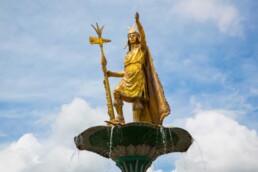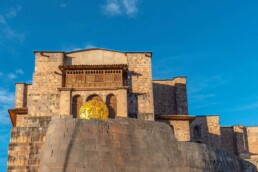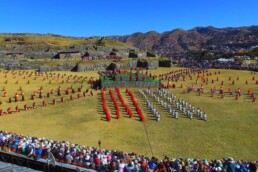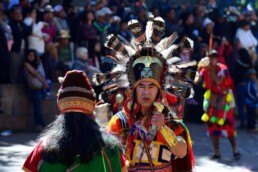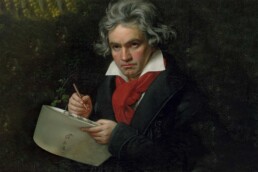Cusco often known as the “Navel of the World,” is a city where the past and present blend effortlessly, creating Inca legacy that continues to form its character. Cusco, nestled in the Andes highlands, was once the capital of the great Inca Empire, a civilization known for its architectural skill, agricultural advances, and intricate social institutions. Today, the city’s rich history and long-standing cultural customs make it an intriguing destination for both tourists and historians.
The city has a rich history and legends surrounding its origins. According to Inca mythology, Manco Cápac and Mama Ocllo established the city after emerging from Lake Titicaca at the order of the sun deity Inti. Archaeological evidence, however, indicates that Cusco was already a large settlement before the Incas ascended to power in the early thirteenth century. Cusco, led by Inca monarch Pachacuti, was built into a huge metropolitan centre that reflected the empire’s majesty and refinement.
Inca architecture shows the ancient civilization’s great technical and creative skills. The city’s layout was precisely constructed to coincide with celestial phenomena, demonstrating the Incas’ strong connection to their surroundings. Cusco was constructed in the shape of a puma, a sacred animal in Inca mythology that represents strength and wisdom. The puma’s head was represented by Sacsayhuamán, a fearsome stronghold above the city, while its body sprawled out across the urban landscape. This layout not only had symbolic value, but it also demonstrated the Incas’ ability to combine urban planning with their spiritual beliefs.
One of the most notable aspects of Inca architecture is its precise masonry. Massive stones were carved and fitted together with such precision that no blade of grass could fit between them, as seen in Sacsayhuamán’s walls and the Qorikancha temple. The trapezoidal doors and windows, which were built to withstand earthquakes, demonstrate the Incas’ architectural inventiveness. The streets were set out in a grid arrangement, which facilitated efficient mobility and improved the city’s defensive capabilities. Canals and aqueducts crisscrossed the city, providing a consistent water supply and demonstrating the Incas’ advanced mastery of hydraulics.
Cusco was more than just an architectural marvel; it was also the Inca Empire’s spiritual centre. The Qorikancha, or Temple of the Sun, was the most sacred location, dedicated to Inti, the sun god. It was covered in gold, symbolising the Incas’ wealth and adoration for their deities. Today, the vestiges of Qorikancha are juxtaposed with the Spanish colonial church of Santo Domingo, forming a moving visual tale of invasion and cultural blending.
Religious traditions in were firmly interwoven in the Incas’ everyday existence. Major festivals, such as Inti Raymi, the Festival of the Sun, were marked by elaborate rites and rituals. This winter solstice festival honoured the sun god while also ensuring the land’s fertility. Even today, Inti Raymi is reenacted with tremendous enthusiasm, attracting both residents and tourists to see this vivid show. The ongoing commemoration of such festivities demonstrates the Inca customs’ persistent influence in modern Cusco.
The social structure of Inca civilization was complex and hierarchical. The Sapa Inca, seen as a divine sovereign, reigned supreme. Below him were the nobles, who oversaw the empire’s vast lands, and the commoners, who cultivated the land and served in a variety of roles. This hierarchical structure was reflected in the city’s layout, with separate zones designated for different classes and functions. The agricultural terraces surrounding Cusco, such as those in the Sacred Valley, demonstrate the Incas’ creative farming practices and ability to adapt to the harsh Andean climate.
The entrance of Spanish conquistadors in the 16th century constituted a watershed moment in Cusco’s history. During the conquest, numerous Inca structures were destroyed and either disassembled or converted for colonial use. Despite this, the indomitable spirit of the Inca tradition endured. The blend of Inca and Spanish influences is obvious in Cusco’s architecture, where colonial churches rest on ancient foundations, as well as the city’s cultural activities, which combine indigenous and European components.
In modern-day Cusco, there are initiatives to conserve and honour the Inca history. The city has been classified as a UNESCO World Heritage Site, recognising its historical significance and the need for preservation. Initiatives to restore and maintain Inca monuments, as well as promote traditional festivals and crafts, are critical to preserving the cultural legacy. Tourism has provided economic benefits, but it also presents obstacles, such as the need to balance development with preservation.
The city provides visitors with numerous opportunity to learn about the city’s rich Inca past. Sacsayhuamán, Qorikancha, and the Sacred Valley offer insights into the Incas’ architectural and cultural achievements. Participating in local festivities like Inti Raymi and visiting crowded markets selling traditional crafts provide immersive cultural experiences. These connections not only enrich the vacation experience, but also contribute to the preservation of Cusco’s distinct cultural identity.
Cusco is a lively reminder of the Inca civilization’s ongoing influence. Its streets and structures tell stories of a magnificent empire, and its cultural rituals preserve the Inca spirit. The city’s capacity to honour its history while embracing the present transforms it into a living museum and bustling cultural centre. Exploring Cusco is more than just a voyage through time; it’s an invitation to witness the tenacity and continuity of an exceptional history that continues to inspire and captivate the world.
